|
Books Should Be Free Loyal Books Free Public Domain Audiobooks & eBook Downloads |
|
|
Books Should Be Free Loyal Books Free Public Domain Audiobooks & eBook Downloads |
|
Teen and Young Adult Books |
|---|
|
Book type:
Sort by:
View by:
|
By: P. G. Wodehouse (1881-1975) | |
|---|---|
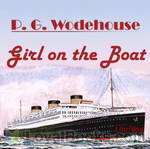 The Girl on the Boat
The Girl on the Boat
Also published as "Three Men and a Maid". The maid of the title is red-haired, dog-loving Wilhelmina "Billie" Bennet, and the three men are Bream Mortimer, a long-time friend and admirer of Billie, Eustace Hignett, a lily-livered poet who is engaged to Billie at the opening of the tale, and Sam Marlowe, Eustace's dashing cousin, who falls for Billie at first sight. All four find themselves on an ocean liner headed for England together, along with a capable young woman called Jane Hubbard who is smitten with Eustace, and typically Wodehousian romantic shenanigans ensue. (Introduction by wikipedia) | |
By: Augusta Huiell Seaman (1879-1950) | |
|---|---|
 The Dragon's Secret
The Dragon's Secret
Sixteen year old Leslie Crane has come to the New Jersey shore as a companion to ailing Aunt Marcia, whose doctor has sent her there for a some quiet rest and recuperation. While the beach is lovely in October, Leslie quickly finds herself getting lonely with no one her own age to talk to. Little does she realize that she will not only soon make a new friend, but that they will both end up in the midst of a puzzling mystery centered around the closed up bungalow next door. Augusta Huiell Seaman is the author of over 40 historical fiction and mystery novels for older children most of which are currently out of print. The Dragon’s Secret was originally published in 1921. | |
By: M.L. Nesbitt | |
|---|---|
 Grammar-Land
Grammar-Land
In this charming 1877 book of grammar instruction for children, we are introduced to the nine parts of speech and learn about the rules that govern them in Grammar-Land."Judge Grammar is far mightier than any Fairy Queen, for he rules over real kings and queens down here in Matter-of-fact-land. Our kings and queens have all to obey Judge Grammar’s laws, or else they would talk what is called bad grammar; and then, even their own subjects would laugh at them, and would say: “Poor things!They are funny fellows, these nine Parts-of-Speech... | |
By: Mabel Hale | |
|---|---|
 Beautiful Girlhood
Beautiful Girlhood
The transitioning years between girlhood and womanhood are an exciting time for a girl, as well as tumultuous and confusing. Beautiful Girlhood by Mabel Hale is a lovely guide that will help the young girl understand the changes she is going through emotionally and physically and also guide her in the proper behavior befitting a young woman. | |
By: Laura Lee Hope | |
|---|---|
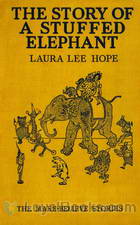 The Story of a Stuffed Elephant
The Story of a Stuffed Elephant
The Story of a Stuffed Elephant is… well, the story of a Stuffed Elephant and the little boy who owns him, and his sister, and all their adventures. A delightful children’s book by the author of The Bobbsey Twins series. | |
 The Moving Picture Girls
The Moving Picture Girls
Ruth and Alice DeVere and their father Hosmer struggle to make ends meet in New York City – times are hard, even for a talented actor like Mr. DeVere. Just as he successfully auditions for a new play, an old voice affliction renders him terribly hoarse and he loses the role. Despite voice rest and medical treatment, Mr. DeVere’s voice fails to improve, and it is impossible to find theatre work. A friend and neighbour in their apartment building suggests that Mr. DeVere tries acting in the moving pictures (which being silent, would not need him to speak at all) but Mr... | |
By: Laura Lee Hope and Edward Stratemeyer (1862-1930) | |
|---|---|
 The Bobbsey Twins or Merry Days Indoors and Out
The Bobbsey Twins or Merry Days Indoors and Out
The Bobbsey Twins are the principal characters of what was, for many years, the Stratemeyer Syndicate's longest-running series of children's novels, penned under the pseudonym Laura Lee Hope. The first of 72 books was published in 1904, the last in 1979. The books related the adventures of the children of the middle-class Bobbsey family, which included two sets of fraternal twins: Bert and Nan, who were 12 years old, and Flossie and Freddie, who were six. | |
By: Laura Lee Hope | |
|---|---|
 The Bobbsey Twins at the Seashore
The Bobbsey Twins at the Seashore
In this third volume of the “Bobbsey Twin Series”, the twins – Nan and Bert and Freddie and Flossie – go with their family to visit relatives at the seashore. Excitement and adventure are sure to abound! | |
By: Laura Lee Hope and Lilian C. Garis (1873-1954) | |
|---|---|
 The Bobbsey Twins in the Country
The Bobbsey Twins in the Country
The second book in The Bobbsey Twins series finds the two sets of twins experiencing life in the country during the first part of their summer vacation from school. Their stay with their aunt, uncle and cousins on their farm in Meadow Brook is filled with new adventures for the 'city' Bobbseys. (Introduction by Lee Ann Howlett) | |
By: Laura Lee Hope | |
|---|---|
 Bunny Brown and his Sister Sue at Christmas Tree Cove
Bunny Brown and his Sister Sue at Christmas Tree Cove
Bunny Brown and His Sister Sue were featured in a series of 20 books for young children published by the Stratemeyer Syndicate from 1916-1930. In this adventure, first published in 1920, Bunny and Sue lose a valuable possession belonging to their mother. They have many adventures and misadventures during a family boating vacation to Christmas Tree Cove. (Introduction by S. McGaughey) | |
 The Story of a Candy Rabbit
The Story of a Candy Rabbit
The Candy Rabbit wakes up one morning to find his Destiny has arrived: he is part of a wonderful Easter display at the toy shop in which he lives -- and any moment now the customers will arrive! Follow this sweet chap as he has many little adventures, making new friends and catching up with old friends along the way. | |
 Bobbsey Twins at Snow Lodge
Bobbsey Twins at Snow Lodge
The Bobbsey Twins are back at school after summer vacation, but Danny Rugg, the school bully, is up to mischief again--and this time he's trying to pin it onto Bert. Bert gets accused of freezing a giant snowball to the school steps, and all the evidence seems to point against him. Christmas is coming too, and the Bobbsey Twins are busy planning for their trip to Snow Lodge--where a lost treasure, a restored friendship, and exciting adventures await. | |
By: Mary Mapes Dodge (1831-1905) | |
|---|---|
 Hans Brinker
Hans Brinker
Mary Mapes Dodge created an instant bestseller with “Hans Brinker or The Silver Skates.” She wanted the book to be partly a book of travels and partly a domestic story. It is a tale written for children that adults also find interesting and uplifting. Dodge writes as if she is sending a series of letters from Holland to children in America, and her you-are-there perspective is aided by a nice attention to detail and vivid imagery.The Brinkers are a poor but stoic family under a dark cloud – Raff, the man of the house, fell from the dikes while reinforcing them during a bad storm, and for ten years he has been in a vegetative state... | |
By: John Ruskin | |
|---|---|
 The King of the Golden River
The King of the Golden River
When three brothers mortally offend Mr. Southwest Wind, Esquire, their farm is laid waste and their riches lost. Desperate for money, the brothers become goldsmiths and melt down their remaining treasures . . . only to find that the spirit of the King of the Golden River resides with a molded tankard, and knows the secret of the riches of the Golden River. (Introduction by Xenutia) | |
By: Plague Ship (1912-2005) | |
|---|---|
 Voodoo Planet
Voodoo Planet
The sequel to Plague Ship, Voodoo Planet finds the Solar Queen banned from trade and starting her supposed quiet two-year stint as an interstellar mail carrier. But instead her crew accepts a visit to the safari planet of Khatka, where they find themselves caught in a battle between the forces of reason and the powers of Khatka’s mind-controlling wizard. | |
By: L. Frank Baum (1856-1919) | |
|---|---|
 Aunt Jane's Nieces at Work
Aunt Jane's Nieces at Work
The novel carries forward the continuing story of the three cousins Louise Merrick, Beth De Graf, and Patsy Doyle, and their circle. The title is somewhat misleading; it could more accurately have been called Aunt Jane's Nieces in Politics. (Uncle John Merrick tells his nieces that politics is "work," which yields the title.)The story begins three days after the end of the previous book, Aunt Jane's Nieces at Millville; the freckled and red-haired Patsy still sports a sunburn from her summer in the Adirondacks... | |
 Aunt Jane's Nieces In The Red Cross
Aunt Jane's Nieces In The Red Cross
The 10th and final book in the series for adolescent girls sees two of the three cousins react to atrocities in World War I by volunteering in the Red Cross. Written under the pseudonym of Edith Van Dyne, this is the 1915 version, which reflects United States' neutrality. A later version, published in 1918, differed significantly to reflect changes in the position of the United States. | |
 Aunt Jane's Nieces In Society
Aunt Jane's Nieces In Society
Written under pseudonym of Edith Van Dyne. The story continues the adventures of three cousins, Louise, Patsy and Beth,with their debuts in society and the appearance of suitors, one of whom is rejected and kidnaps Louise. | |
By: Samuel B. Allison | |
|---|---|
 An American Robinson Crusoe
An American Robinson Crusoe
An American Robinson Crusoe is a short version of the original story. An indolent, rebellious teen goes on a marine voyage against his parents’ wishes. The ship (and all of its crew) is lost in a storm, but Robinson makes it to a deserted island. He has no tools, no weapons, but he lives for over 28 years on the island. He befriends many animals on the island and after over 20 years living solo, he is joined by a young “savage” who becomes his constant companion. The transformation from the young, lazy teen to a self-sustaining, incredibly knowledgeable adult is one of the major themes in the story. | |
By: Johnny Gruelle (1880-1938) | |
|---|---|
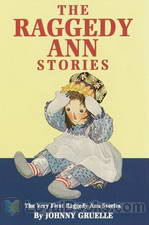 Raggedy Ann Stories
Raggedy Ann Stories
To the millions of children and grown-ups who have loved a Rag Doll, the author dedicated these stories. Now listen as Shannon reads to you Raggedy Ann’s exciting adventures; as gentle and charming today, as they were when first published in 1918. Find out what is written on her candy heart, what was the gift the fairies brought, and all about Raggedy Ann’s new sisters. | |
By: Ethel C. Pedley (1859-1898) | |
|---|---|
 Dot and the Kangaroo
Dot and the Kangaroo
Dot and the Kangaroo, written in 1899, is a children’s book by Ethel C. Pedley about a little girl named Dot who gets lost in the Australian outback and is eventually befriended by a kangaroo and several other marsupials. | |
By: C. J. Dennis (1876-1938) | |
|---|---|
 The Glugs of Gosh
The Glugs of Gosh
First published in 1917, The Glugs of Gosh satirizes Australian life at the start of the twentieth century – but the absurdities it catalogs seem just as prevalent at the start of the twenty-first. The foolishness of kings, the arrogance of the elite, the gullibility of crowds, the pride of the self-righteous, the unthinking following of tradition – all find themselves the targets of C. J. Dennis’ biting wit. | |
By: Eva March Tappan (1854-1930) | |
|---|---|
 Makers of Many Things
Makers of Many Things
How are friction matches made? How do rags and trees become paper? Who makes the dishes on our tables? Published in 1916, this children's book explains the origins of everyday items in an entertaining and informative way. There are plenty of illustrations, so please feel free to read along. | |
 When Knights Were Bold
When Knights Were Bold
This book is in no degree an attempt to relate the involved and intricate history of the Middle Ages. Its plan is, rather, to present pictures of the manner of life and habits of thought of the people who lived between the eighth and fifteenth centuries. Our writings and our everyday conversation are full of their phrases and of allusions to their ideas. Many of our thoughts and feelings and instincts, of our very follies and superstitions, have descended to us from them. To become better acquainted with them is to explain ourselves. | |
By: Katherine Pyle (1863-1938) | |
|---|---|
 The Counterpane Fairy
The Counterpane Fairy
A little boy, recuperating from a lengthy illness, is entertained by visits from the Counterpane Fairy, who treats him to stories associated with each of the squares in the counterpane (quilt) on his sickbed. She has him concentrate on one of the squares until it turns into something like a doorway into the story. Once inside the story, he becomes its lead character until it fades out as if he’s awakening from a dream. | |
By: Roy J. Snell (1878-1959) | |
|---|---|
 The Blue Envelope
The Blue Envelope
A mystery and adventure story for girls set in Alaska. | |
By: Edith Howes (1872-1954) | |
|---|---|
 Wonderwings and other Fairy Stories
Wonderwings and other Fairy Stories
A collection of three short stories about fairies, complete with good moral lessons (as every fairy tale should be). | |
By: Oliver Optic (1822-1897) | |
|---|---|
 The Birthday Party, A Story For Little Folks
The Birthday Party, A Story For Little Folks
Flora Lee’s birthday came in July. Her mother wished very much to celebrate the occasion in a proper manner. Flora was a good girl, and her parents were always glad to do any thing they could to please her, and to increase her happiness. | |
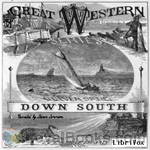 Down South or Yacht Adventure in Florida
Down South or Yacht Adventure in Florida
"Down South" is the fifth and last volume but one of the "Great Western Series." The action of the story is confined entirely to Florida; and this fact may seem to belie the title of the Series. But the young yachtsman still maintains his hold upon the scenes of his earlier life in Michigan, and his letters come regularly from that State. If he were old enough to vote, he could do so only in Michigan; and therefore he has not lost his right to claim a residence there during his temporary sojourn in the South... | |
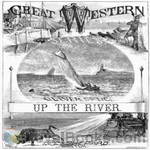 Up the River
Up the River
Up the River is the sixth and last of “The Great Western Series.” The events of the story occur on the coast of Florida, in the Gulf of Mexico, and on the Mississippi River. The volume and the series close with the return of the hero, by a route not often taken by tourists, to his home in Michigan. His voyaging on the ocean, the Great Lakes, and the Father of Waters, is finished for the present; but the writer believes that his principal character has grown wiser and better since he was first introduced to the reader... | |
By: Charlotte M. Yonge (1823-1901) | |
|---|---|
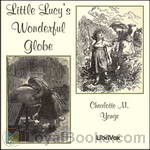 Little Lucy's Wonderful Globe
Little Lucy's Wonderful Globe
Travel with Little Lucy around the globe and learn a little geography and small bits about other cultures. | |
By: Alexandre Exquemelin (c. 1645-1707) | |
|---|---|
 The Pirates of Panama
The Pirates of Panama
This volume was originally written in Dutch by John Esquemeling, and first published in Amsterdam in 1678 under the title of De Americaeneche Zee Roovers. It immediately became very popular and this first hand history of the Buccaneers of America was soon translated into the principal European languages. The first English edition was printed in 1684. Esquemeling served the Buccaneers in the capacity of barber-surgeon, and was present at all their exploits. Little did he suspect that his first hand observations would some day be cherished as the only authentic and true history of the Buccaneers and Marooners of the Spanish Main... | |
By: Edward R. Shaw (1855-1903) | |
|---|---|
 Discoverers and Explorers
Discoverers and Explorers
Tales of the brave and daring explorers that ventured into the unknown “Sea of Darkness” where it was thought monsters and angry gods lived. They dared to sail near the equator which was thought to have such intense heat that it would boil the ocean water. It was also commonly thought at the time that the world was flat, and the ships would fall off the face of the earth. These men overcame these fears to explore and discover new lands. | |
By: Stella M. Francis | |
|---|---|
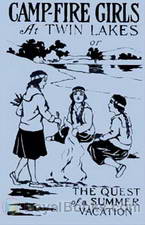 Campfire Girls at Twin Lakes or The Quest of a Summer Vacation
Campfire Girls at Twin Lakes or The Quest of a Summer Vacation
“Girls, I have some great news for you. I’m sure you’ll be interested, and I hope you’ll be as delighted as I am. Come on, all of you. Gather around in a circle just as if we were going to have a Council Fire and I’ll tell you something that will—that will—Teddy Bear your teeth.” A chorus of laughter, just a little derisive, greeted Katherine Crane’s enigmatical figure of speech. The merriment came from eleven members of Flamingo Camp Fire, who proceeded to form an arc of a circle in front of the speaker on the hillside grass plot near the white canvas tents of the girls’ camp. (Gutenberg) | |
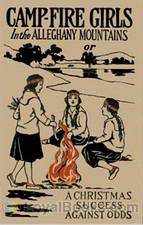 Campfire Girls In The Allegheny Mountains or, A Christmas Success Against Odds
Campfire Girls In The Allegheny Mountains or, A Christmas Success Against Odds
The Camp Fire Girls books is a series of fiction novels written for children by various authors from 1912 into the 1930s. (Wikipedia) | |
By: Richard Harding Davis (1864-1916) | |
|---|---|
 The Boy Scout and Other Stories for Boys
The Boy Scout and Other Stories for Boys
RICHARD HARDING DAVIS, as a friend and fellow author has written of him, was “youth incarnate,” and there is probably nothing that he wrote of which a boy would not some day come to feel the appeal. But there are certain of his stories that go with especial directness to a boy’s heart and sympathies and make for him quite unforgettable literature. A few of these were made some years ago into a volume, “Stories for Boys,” and found a large and enthusiastic special public in addition to Davis’s general readers; and the present collection from stories more recently published is issued with the same motive... | |
By: George Alfred Henty (1832-1902) | |
|---|---|
 With Frederick The Great: A Story of the Seven Years' War
With Frederick The Great: A Story of the Seven Years' War
Among the great wars of history there are few, if any, instances of so long and successfully sustained a struggle, against enormous odds, as that of the Seven Years' War, maintained by Prussia--then a small and comparatively insignificant kingdom--against Russia, Austria, and France simultaneously, who were aided also by the forces of most of the minor principalities of Germany. The population of Prussia was not more than five millions, while that of the Allies considerably exceeded a hundred millions... | |
 Under Drake's Flag: A Tale Of The Spanish Main
Under Drake's Flag: A Tale Of The Spanish Main
An exciting tale set on the high seas, in a period ruled by exploration, with the ever-present dangers of nature and the weather, together with pirates of the famed Spanish Main. | |
 Captain Bayley's Heir: A Tale of the Gold Fields of California
Captain Bayley's Heir: A Tale of the Gold Fields of California
When young Frank is falsely accused of a crime, he leaves England to seek adventure in America. He joins a wagon train heading west to the California gold fields, but as he is soon to find out, the West is more than just adventure! Braving Indians, wolves, and other dangers, Frank is determined to strike it rich - and perhaps someday clear his name and return home. | |
By: E. A. Gillie | |
|---|---|
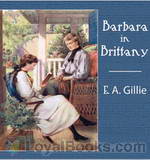 Barbara in Brittany
Barbara in Brittany
Barbara, an English girl and the eldest of her family, spends most days helping her widowed mother care for her younger siblings. Then disaster strikes – or so the children believe! Barbara is taken to France to see Paris by her father’s formidable sister, Aunt Anne. She stays on in Brittany to perfect her French. In this series of funny stories about her adventures in France, we meet a cast of recurring characters – and both Barbara and Aunt Anne find love! (Summary by Sibella Denton) | |
By: Jessie Graham Flower (-1931) | |
|---|---|
 Grace Harlowe's Plebe Year at High School
Grace Harlowe's Plebe Year at High School
This delightful book tells about a group of smart youths who get up to some wonderful adventures together – and save one another from troubles. The unofficial leader of the group is Grace Harlowe, the title character. When Anne Pierson comes to the class at the beginning of the year, they decide to take her under their wing. Anne has a lot of troubles at home, but will true friends make her happy? | |
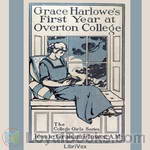 Grace Harlowe's First Year at Overton College
Grace Harlowe's First Year at Overton College
Set after the Grace Harlowe High School series, Grace and her friends Miriam and Anne start a new chapter of their lives as Freshmen at Overton College. After various trials and tribulations they earn the respect of the elder classes and become valued members of the school. (Introduction by BumbleVee) | |
 Grace Harlowe's Sophomore Year at High School
Grace Harlowe's Sophomore Year at High School
Being a good and loyal friend is not easy, and Grace learns it the hard way. But, as in all children's books, good triumphs over evil. | |
 Grace Harlowe's Senior Year at High School; or, The Parting of the Ways
Grace Harlowe's Senior Year at High School; or, The Parting of the Ways
The four series follow Grace Harlowe and her friends through high school, college, abroad during World War I, and on adventures around America. In The High School Girls Series, Grace attends Oakdale High School with friends Anne Pierson, Nora O'Malley, and Jessica Bright. The four promote fair play and virtue while winning over troubled girls like Miriam Nesbit and Eleanor Savell, playing basketball, and founding sorority Phi Sigma Tau. The group becomes friends with boys in their acquaintance: David Nesbit, Tom Gray, Hippy Wingate, and Reddy Brooks, forming "The Eight Originals." | |
 Grace Harlowe's Second Year at Overton College
Grace Harlowe's Second Year at Overton College
The four series follow Grace Harlowe and her friends through high school, college, abroad during World War I, and on adventures around America. In The High School Girls Series, Grace attends Oakdale High School with friends Anne Pierson, Nora O'Malley, and Jessica Bright. The four promote fair play and virtue while winning over troubled girls like Miriam Nesbit and Eleanor Savell, playing basketball, and founding sorority Phi Sigma Tau. The group becomes friends with boys in their acquaintance: David Nesbit, Tom Gray, Hippy Wingate, and Reddy Brooks, forming "The Eight Originals." | |
 Grace Harlowe's Third Year at Overton College
Grace Harlowe's Third Year at Overton College
The four series follow Grace Harlowe and her friends through high school, college, abroad during World War I, and on adventures around America. In The High School Girls Series, Grace attends Oakdale High School with friends Anne Pierson, Nora O'Malley, and Jessica Bright. The four promote fair play and virtue while winning over troubled girls like Miriam Nesbit and Eleanor Savell, playing basketball, and founding sorority Phi Sigma Tau. The group becomes friends with boys in their acquaintance: David Nesbit, Tom Gray, Hippy Wingate, and Reddy Brooks, forming "The Eight Originals." | |
By: Eleanor Gates (1875-1951) | |
|---|---|
 The Poor Little Rich Girl
The Poor Little Rich Girl
The Poor Little Rich Girl is a children’s fantasy about a little girl named Gwendolyn who is lonely and longs for a friend. But she is isolated by rich parents who ignore her and left to the care of servants who are indifferent. Her nanny’s carelessness with some medicine plunges Gwendolyn into a bewildering world in which metaphors literally come to life. | |
By: Ernest Thompson Seton | |
|---|---|
 The Biography of a Grizzly
The Biography of a Grizzly
I first read this little book when I was in the fifth grade, and now more than fifty years later, I still find it fascinating. Ernest Thompson Seton was a man with a concern for nature her creatures and an excellent story teller. I could almost feel Wahb, the great grizzly’s pain and frustration as he tried to avoid contact with humans and just be left alone to carry out his bear business. Listening to this audio book will be an hour and a half well spent.Summary by Mike Vendetti, Narrator. | |
By: Harold W. Fairbanks (1860-1952) | |
|---|---|
 The Western United States: A Geographical Reader
The Western United States: A Geographical Reader
“In preparation of this book the author has had in mind the needs of the upper grammar grades. The subject matter has not been selected with the object of covering the field of Western geography in a systematic manner, but instead the attempt has been made to picture as graphically as may be some of its more striking and interesting physical features, and the influence which these features have exerted upon its discovery and settlement.” (from the Preface of The Western United States) | |
By: William Henry Giles Kingston | |
|---|---|
 Stories of Animal Sagacity
Stories of Animal Sagacity
300+ short stories of how smart and savvy various individual animals have been seen to be, and in most cases a little moral is drawn from the story. | |
By: Martha Finley (1828-1909) | |
|---|---|
 Elsie Dinsmore
Elsie Dinsmore
Elsie, young and motherless, has never met her father and is being raised by her father’s family. As a strong Christian, she has many trials within the unbelieving family. Her greatest comforts are her faith and her mammy, Chloe. Finally, her father returns home. Will her father love her? Will her father learn to love Jesus? | |
 Holidays at Roselands
Holidays at Roselands
This is the second book of the much loved Elsie Dinsmore series and starts where the first book left off. Elsie is still recuperating from her weakness, with her kind and indulgent father by her side.The story revolves around how a strong bond of love and understanding takes root between the father and daughter, as they holiday at Roselands, and visit exciting places, with some of our favorite friends from the first book, Mr. Travilla, Adelaide, Chloe, Lora and the others. | |
 Elsie's Girlhood
Elsie's Girlhood
In the third book of Martha Finley's much-loved Elsie Dinsmore series, Elsie's life is traced from the tender age of 12 or 13 to the mature age of 21. Her life is not all sunshine and roses, but she is secure in the love of the Lord and her family. | |
 Elsie's Motherhood
Elsie's Motherhood
After the Civil War, Elsie and her family return to their home in the South, dealing with the upheaval that the Reconstruction Era brought during the years after the war. | |
 Elsie's Children
Elsie's Children
This book continues the delightful "Elsie Dinsmore" series. Elsie's children, introduced in the previous volume, live life, grow up, and encounter various problems of their own. Additional Proof Listeners: AlaynaMay & Rachel. | |
By: Edith Nesbit (1858-1924) | |
|---|---|
 Pussy and Doggy Tales
Pussy and Doggy Tales
Charming Tales about cats and dogs. | |
 Story of the Amulet
Story of the Amulet
The third of the series featuring Cyril, Anthea, Robert and Jane: four children who are, as they often say, "the sort of people that wonderful things happen to". In 'Five Children and It' they were lucky enough to meet the magical, wish-granting Psammead - and in this final book they meet him once again. He guides them to an ancient Amulet that will help them find their hearts' desire - but it's only half an amulet, and seeking for the other half has them whizzing about through time on another series of amazing adventures. | |
By: Kirk Munroe (1850-1930) | |
|---|---|
 The Copper Princess: A Story of Lake Superior Mines
The Copper Princess: A Story of Lake Superior Mines
The Copper Princess: A Story of Lake Superior Mines is an adventure set in the beautiful Upper Peninsula of Michigan. The delightful story features a brave and wholesome hero struggling for his rightful copper mining inheritance against smugglers and bandits. He also encounters a beautiful and mysterious maiden who is caught in her father’s secret crimes. | |
By: Victor Appleton | |
|---|---|
 Tom Swift and his Airship
Tom Swift and his Airship
In Tom Swift and His Airship, Tom Swift has finished his latest invention- the Red Cloud, a fast and innovative airship. Tom is anxious for a cross-country trial, but just before he and his friends take off, the Shopton bank is robbed. No sooner is Tom in the air than he is blamed for the robbery. Suddenly, he's a wanted fugitive but doesn't know why until he's half-way across the country. With no safe harbor or friend on the land below, Tom must race back to Shopton to clear his name before he's shot out of the sky. | |
 Tom Swift Among the Diamond Makers
Tom Swift Among the Diamond Makers
Tom Swift flies his airship to the mountain tops of Colorado to seek for the secret of the Diamond Makers: criminal scientists who have figured out the formula of manufacturing a limitless fortune in diamonds. But these rogues will stop at nothing to keep their secret. Tom & friends are soon captured and left to die in a collapsing mountain. | |
 Tom Swift and His Wireless Message
Tom Swift and His Wireless Message
Tom Swift & friends decide to trial an experimental airship near the New Jersey coast, and are unexpectedly swept out to sea by hurricane winds. Unable to steer or navigate without tearing the airship apart, the hapless crew must simply let the storm take them wherever it will. Unfortunately, the storm proves too much for the craft and Tom makes a crash landing on the uninhabited and crumbling Earthquake Island. | |
 Tom Swift and His Sky Racer
Tom Swift and His Sky Racer
A $10,000 prize lures Tom into competing at a local aviation meet at Eagle Park. Tom is determined to build the fastest plane around, but his plans mysteriously disappear, which means Tom must redesign his new airplane from the beginning. | |
By: Ray Cummings (1887-1957) | |
|---|---|
 Brigands of the Moon
Brigands of the Moon
Gregg Haljan was aware that there was a certain danger in having the giant spaceship Planetara stop off at the moon to pick up Grantline’s special cargo of moon ore. For that rare metal — invaluable in keeping Earth’s technology running — was the target of many greedy eyes. But nevertheless he hadn’t figured on the special twist the clever Martian brigands would use. So when he found both the ship and himself suddenly in their hands, he knew that there was only one way in which he could hope to save that cargo and his own secret — that would be by turning space-pirate himself and paying the Brigands of the Moon back in their own interplanetary coin. (From the Gutenberg e-text) | |
By: Kate Langley Bosher (1865-1932) | |
|---|---|
 Mary Cary, Frequently Martha
Mary Cary, Frequently Martha
“My name is Mary Cary. I live in the Yorkburg Female Orphan Asylum. You may think nothing happens in an Orphan Asylum. It does. The orphans are sure enough children, and real much like the kind that have Mothers and Fathers; and that’s why I am going to write this story.” So begins Mary’s diary, which she fills with her various doings and misadventures at the Asylum in Virginia and her sharp observations about life and human nature. She loathes Miss Bray, the head of the Asylum, who is not above telling bald-faced lies to the Board to further her own selfish ends... | |
By: J. Walker McSpadden (1874-1960) | |
|---|---|
 Boys' Book of Famous Soldiers
Boys' Book of Famous Soldiers
These 12 stories give a personal portrait of twelve famous soldiers from the past two centuries. Each story explores the early life of the solder —to trace his career up from boyhood through the formative years. Such data serves to explain the great soldier of later years. Summary compiled from the preface of the book. (Summary by philchenevert) | |
By: Robert Michael Ballantyne (1825-1894) | |
|---|---|
 Gorilla Hunters
Gorilla Hunters
Ralph Rover is happily at home from his adventure on The Coral Island and wondering if he should settle down when he receives a visit from an eccentric stranger that won't give his name. This visit starts him on a string of adventures that find him getting charged by rhinoceroses, chased by African natives, and facing down a larger-than-life gorilla on his own. Of course, this is only the start of his adventure in to the land of the gorillas. Please note: this book has some words now considered derogatory, which are used in a generic way without any derogatory meaning... | |
 Iron Horse
Iron Horse
“Is that your bundle, sir?” repeated Mr Blunt a little louder. “Eh? yes, yes—all right,” replied Edwin, annoyed at the interruption, and thinking only of Emma Lee, to whom he turned, and went on—“Well, when Colonel Jones had scaled the first wall—” “Come, sir,” said Blunt, entering the carriage, and laying his hand on Edwin’s shoulder, “it’s not all right. This is another man’s property.” The youth turned round indignantly, and, with a flushed countenance, said, “What do you mean?” “I mean that you are travelling with another man’s property,” said Blunt, quietly pointing to the strapped rug... | |
 Charlie to the Rescue
Charlie to the Rescue
Charlie Brooke is always rescuing others, and sometimes even himself! His latest rescue, though, could turn out to be fatal... | |
 Post Haste
Post Haste
In this book, Ballantyne weaves the story of Phillip Mayland and his friend, George Aspel with an interesting portrayal of the British Post Office as it existed in the 19th century. In the words of R. M. Ballantyne himself: "This tale is founded chiefly on facts furnished by the Postmaster-General’s Annual Reports, and gathered, during personal intercourse and investigation, at the General Post-Office of London and its Branches. It is intended to illustrate—not by any means to exhaust—the subject of postal work, communication, and incident throughout the Kingdom... | |
 Island Queen
Island Queen
The story of Dominic, Otto and Pauline Rigonda, three siblings who are blown onto an island after being shipwrecked, and are later joined by the immigrant passengers and crew of a ship that is wrecked on the same island. When the question of government comes up, the little colony chooses a queen, and they work on improving the island for some time, despite internal dissensions, and an attack by savages. But eventually the colony encounters natural forces it cannot resist, and the queen and her family return to England, hopefully to live "happily ever after". | |
 Jarwin and Cuffy
Jarwin and Cuffy
Jarwin is an English sailor who has been shipwrecked. He is stranded on a raft with only his dog Cuffy, and land is nowhere in sight. Their food and water is running out. What can Jarwin do to save his dog's (and his own) life? | |
 Fighting the Flames
Fighting the Flames
| |
 Twice Bought
Twice Bought
This story is set in the gold fields of Oregon, where Tom Brixton, and his best friend, Fred Westly, are digging gold to try to “make their pile”. Before leaving England, the steady and God-fearing Fred had promised Tom's mother that he would do his best to take care of his friend, but in spite of all his efforts, Tom had fallen in with bad companions and taken to gambling. He was convinced that he could make his fortune quicker by attempting to increase it at the dice or card table, and all his friend's attempts to make him see his errors were unavailing... | |
By: Johnny Gruelle (1880-1938) | |
|---|---|
 Raggedy Andy Stories
Raggedy Andy Stories
Raggedy Ann is a fictional character created by writer Johnny Gruelle (1880–1938) in a series of books he wrote and illustrated for young children. Raggedy Ann is a rag doll with red yarn for hair. The character was created in 1915 as a doll, and was introduced to the public in the 1918 book Raggedy Ann Stories. A doll was also marketed along with the book to great success. A sequel, Raggedy Andy Stories (1920) introduced the character of her brother, Raggedy Andy, dressed in sailor suit and hat. | |
By: Ontario Ministry of Education | |
|---|---|
 The Ontario Readers Third Book
The Ontario Readers Third Book
The Ontario Readers is a school book first published in 1909, by the Ontario Ministry of Education, containing short excerpts of literary works, both stories and poems, geared to grade-school age children. | |
By: Thomas Archer | |
|---|---|
 Miss Grantley's Girls, and the Stories She Told Them
Miss Grantley's Girls, and the Stories She Told Them
The author Thomas Archer lived 1830 – 1893; he wrote several juvenile stories, and this book: Miss Grantley’s Girls – And the Stories She Told Them, was published in 1886. It is a book in 7 chapters. Miss Grantley is a teacher and works as a governess, and she after some coaxing tells somewhat romantic stories to “her” girls. In the first chapter it says: “There was nothing romantic in Miss Grantley’s appearance, and yet she was the sort of person that you could not help looking at again and again if you once saw her... | |
By: James Driscoll | |
|---|---|
 The Brighton Boys in the Radio Service
The Brighton Boys in the Radio Service
The Brighton Boys in the Radio Service is a boys adventure story set in WWI – Three College Chums join the military and face the perils of spies, submarines and enemy soldiers in the trenches of embattled Europe. An engaging story set in a period where good guys wore white hats, bad guys wore black hats and every chapter ends with a cliffhanger so you have to come back for more! | |
By: Horatio Alger, Jr. (1832-1899) | |
|---|---|
 A Cousin's Conspiracy
A Cousin's Conspiracy
Ernest Ray is a young boy who sets out to reclaim the inheritance that was unjustly with held from his father and given to a cousin. (Introduction by Abigail Rasmussen) | |
By: Susan Warner (1819-1885) | |
|---|---|
 Queechy
Queechy
Fleda Ringan is an 11 year old orphan who lives with her grandfather in Queechy, Vermont. After a tragic incident, Fleda has to live with her aunt in Paris, Mrs. Rossiter. She travels to Paris under the care of young Mr. Carleton and his mother, a rich Englishwomen. Every young man who meets Fleda loves her, but she adores only Mr. Carleton. Once Fleda's aunt Mrs. Rossiter looses all her money, they return to America where Fleda learns to farm and cook to support her family. Mr. Carleton is always around to help out but never utters a word about love to Fleda. | |
 Nobody
Nobody
There are many romantic tales about a handsome and rich man falling in love with a beautiful lower class woman over the objections of his family. Remember Elizabeth Bennett and Fitzwilliam Darcy? however, it takes more than a good woman to secure a man's happiness. He has to have mental strength. It is not certain that our hero, Tom, has that. Lois is a great woman. However, according to his sister, she is a "nobody." Does money and position control everything? Certainly not. Good people deserve to be happy... | |
By: Thornton W. Burgess (1874-1965) | |
|---|---|
 The Adventures of Jerry Muskrat
The Adventures of Jerry Muskrat
Join us as we follow Jerry Muskrat and his friends on an adventure to discover what is threatening their homeland; The Laughing Brook and The Smiling Pool. | |
 Adventures of Danny Meadow Mouse (dramatic reading)
Adventures of Danny Meadow Mouse (dramatic reading)
Danny begins his tale regretting the length of his tail until he is corrected by Mr. Toad. Then he has a series of stalkings by Reddy and Granny Fox. He is captured by Hooty the Owl and escapes mid-flight to Peter Rabbit's briar patch. Peter goes to Farmer Brown's peach orchard and gets caught in a snare and barely escapes himself. Finally Danny gets trapped in a tin can and must use his wits to escape Reddy Fox again. | |
 Adventures of Lightfoot the Deer
Adventures of Lightfoot the Deer
The Adventures of Lightfoot the Deer is another set of children’s stories by the conservationist, Thornton W. Burgess. More serious than some of Burgess' other children's books, much of this book chronicles the tense predator-prey relationship of a human hunter and Lightfoot the Deer during the autumn hunting season. Later, Lightfoot discovers a hunt of a different kind. | |
 Old Granny Fox
Old Granny Fox
Old Granny Fox and grandson Reddy Fox must use all their cunning to hunt up enough food to survive the long winter. Food in the Green Meadow is scarce but Farmer Brown's hens are locked up tight and protected by Bowser the Hound, so Granny takes a conceited Reddy hunting and teaches him some surprising new tricks to lure in their dinner. Old Granny and Reddy Fox encounter danger and adventure in their quests to keep their bellies full, including a close encounter with Farmer Brown's boy, a clever plot to steal Bowser's food, and an unforeseen thief who might outsmart this sneaky pair. | |
 Blacky the Crow
Blacky the Crow
Blacky the Crow is a clever rascal who lives in the Green Forest and Meadow. He loves to play tricks on the other little people who are his neighbours, and is curious about Farmer Brown’s Boy. Blacky is always thinking about what is right and what is wrong, but he still gets into all kinds of mischief. | |
By: Francis Lovell Coombs | |
|---|---|
 The Young Railroaders
The Young Railroaders
While aimed at youths, this series of tales of the just-opening West makes a rollicking good story for adults, too. Three teen-age boys, trained as telegraphers, manage to get themselves in and out of a wide variety of harrowing circumstances. Using their knowledge of Morse code, the science of telegraphs, and the operation of railroads, the boys stir in native resourcefulness, quick-thinking, and when the occasion demands it, raw courage – to effect rescues, thwart thieves, and solve mysteries. If Tom Swift had lived in the nineteenth century, he could not have had more exciting escapades! | |
By: Carey Rockwell | |
|---|---|
 Stand by for Mars
Stand by for Mars
Tom Corbett - Space Cadet was one of the first multimedia sensations. In the 1950s the character had his own radio show, TV series, comic book, breakfast cereal, and a line of young-adult novels. A cross between "Tom Brown's School Days" and Horatio Hornblower (and loosely based upon Robert A. Heinlein's novel "Space Cadet"), the books follow the adventures of Tom and his friends Roger Manning and Astro as they work their way through Space Academy to become officers of the Solar Guard. Along the way they tangle with space pirates, smugglers, and the threat of demerits for breaking the rules... | |
 Sabotage in Space
Sabotage in Space
This book is part of the on-going adventures of Tom Corbett in the Space Cadet Stories. Tom, Astro and Roger are determined to find the saboteurs but get framed in the process, risking court martial and expulsion from the Space Academy. NOTE: Carey Rockwell is a pseudonym used by Grosset & Dunlap. It is unknown who wrote the books. | |
By: Amy le Feuvre (d.1929) | |
|---|---|
 Probable Sons
Probable Sons
Little Milly is left an orphan after the death of her mother and sent to live with her bachelor uncle, who has no use for children, especially of the female variety. As the days go by, his heart warms to his endearing niece who wants all probable sons to come home, including her very own probable uncle. | |
By: Amy Le Feuvre (1861-1929) | |
|---|---|
 Carved Cupboard (Dramatic Reading)
Carved Cupboard (Dramatic Reading)
Agatha, Gwen, Clare and Elfie have always been told that they will inherit their aunt's house. But when their aunt dies, she leaves it all to their intolerable cousin James. What will they do? Will the verses Nannie gives them prove true? | |
 Odd
Odd
He found the word for her, and she read with difficulty, 'Trouble, distress, great affliction.' 'Do they all mean tribulation?' she asked. 'Tribulation means all of them,' was the answer. 'And can children have tribulation, Mr. Roper?' 'What do you think?' 'I must have it if I'm to get to heaven,' she said emphatically; and then she left him, and the young man repeated her words to himself with a sigh and a smile, as he replaced the book in its resting-place. Little Betty is lonely being the "odd" one ... | |
By: Joseph Alexander Altsheler (1862-1919) | |
|---|---|
 The Young Trailers: A Story of Early Kentucky
The Young Trailers: A Story of Early Kentucky
This is the story of Henry Ware, a young boy living in the wilds of the Kentucky frontier of the 1700's. The story follows Henry as he helps to establish a frontier outpost, is captured by an Indian tribe, and ultimately ensures the safety and security of a band of settlers against the warring Shawnee Indians. The Young Trailers is action packed and brings to life the adventures that awaited the early settlers as they traversed into the endless forests of the American frontier. | |
 The Guns of Shiloh
The Guns of Shiloh
The Northern Army has just be handed a great defeat at Bull Run and is headed back to Washington, DC. How will the North answer this defeat? Follow our hero, Dick Mason, into the Western campaign to find out.This is the second book in the Civil War Series by Joseph A. Altsheler. | |
 Guns of Bull Run
Guns of Bull Run
The first volume in the Civil War series, following the adventures of Harry Kenton, who leaves his home in Kentucky. He travels through dangerous territory to South Carolina on a secret mission on the eve of the Civil War. (From Chapter 4) "They will not fire! They dare not!" cried Shepard in a tense, strained whisper. As the last word left his lips there was a heavy crash. A tongue of fire leaped from one of the batteries, followed by a gush of smoke, and a round shot whistled over the Star of the West... | |
 Rock of Chickamauga
Rock of Chickamauga
"The Rock of Chickamauga," presenting a critical phase of the great struggle in the west, is the sixth volume in the series, dealing with the Civil War, of which its predecessors have been "The Guns of Bull Run," "The Guns of Shiloh," "The Scouts of Stonewall," "The Sword of Antietam" and "The Star of Gettysburg." Dick Mason who fights on the Northern side, is the hero of this romance, and his friends reappear also. | |
By: Rita (E. M. Gollan) (1850-1938) | |
|---|---|
 The Mystery of a Turkish Bath
The Mystery of a Turkish Bath
A group of guests, at an exclusive luxury hotel in Hampshire, are the witnesses of an illustration of occult powers, demonstrated by “the Mystery”, as Mrs. Jefferson named the beautiful stranger who one day appeared in the Turkish Baths of the hotel. The events that follow lead Mrs. Jefferson to question the wisdom of her interest in the occult. | |
By: Harry Collingwood (1851-1922) | |
|---|---|
 Cruise of the Esmeralda
Cruise of the Esmeralda
After his father died, Captain Saint Leger and his family are left destitute. However, the Saint Legers have a family secret: an ancestor is said to have buried a vast fortune in gold and jewels somewhere in the Eastern Seas. The catch: all directions are encrypted. Nevertheless, Captain Saint Leger decides to take a chance and sails east. A journey full of adventure begins, including pirates, storms and mutiny... | |
By: Lord Dunsany (1878-1957) | |
|---|---|
 Fifty-One Tales
Fifty-One Tales
Very brief, well-crafted stories, many having surprise endings, all steeped in the dye of myth and calling to every reader's neglected imagination. | |
By: Edward Stratemeyer (1862-1930) | |
|---|---|
 The Rover Boys on the Ocean
The Rover Boys on the Ocean
The hearty, all-American Rover Boys sail by yacht to Africa in search of their kidnapped father. | |
By: Arthur M. Winfield (1862-1930) | |
|---|---|
 Rover Boys in the Jungle
Rover Boys in the Jungle
Third entry in the then-popular boys' adventure series has the Rover brothers (Tom, Dick, & Sam) heading to Africa to search for their long-missing father, after a few more adventures at their upstate New York boarding school, Putnam Hall. | |